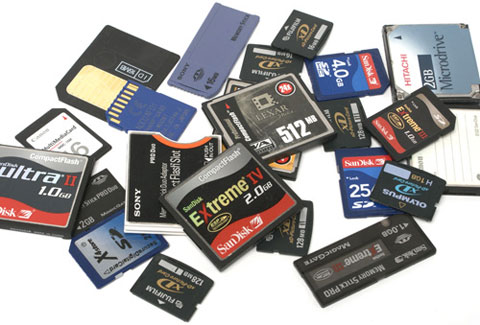Tutorials
Card dump structures
Dumping cards is a job that, at first glance, might seem to be one of the simplest on a shoot. However, the person in charge of doing it must keep an exact control of the cards (which are usually at least three), have order and clarity in naming them and communication with the camera and postproduction team.
If we have this task, the first thing we must do on the shooting set is to number them. A good method to know if a card is overturned or not, is to mark them with a label (or similar) of some color, where we will also put its numbering or name. Once dumped, this label is pasted in a notebook, adding it to the dump parts (where we will also put in which hard disk they are in, the date, etc.).
It is advisable that before shooting, we take advantage of the camera tests to also test the dumps and check that everything works correctly in the computer we are going to use.
All the files must have their specific place, and for that there are folder structures on hard disks. Depending on the type of project in which we are, we will put some data or others.
This is an example for a simple project:
– Folder with the name of the project
➢ Camera 1
– Day 1
– Card 1
– Card 2
– Day 2
-Card 3
-Card 4
In this case, if there were a second camera, we would create another folder for it with the same structure. The cards are never repeated, but their numbering is marked in order of use.
If we are faced with a more complex production, the structure of dumps will have to be adapted and, therefore, will also be more elaborate. This is an example:
– Folder with the name of the project
➢ IMAGE
– 101A
– 101B
– 101C
➢ SOUND
– 201A
In the folder named “101A“, the first 1 indicates that we are working with images; as well as in “201A“, the 2 shows us that the clips we will find inside are sound clips. In this way, with a simple glance we know what we have in front of us, without having to open the files.
In these same folders, the “01” that follows indicates the day of shooting, so if we have a folder named “101” we will know that it refers to image, first day of shooting; “102” will be image, second day of shooting; and so on.
The letters A, B and C refer to the cards. We may be interested in further specifying the cards that have been used at each point in time. To do so, we could do it this way:
– Folder with the name of the project
➢ IMAGE
– 102A CFA
In this example CF has been added to the nomenclature to mark that the card used is a Compact Flash and is named (this time by its name or bearing numbering) as A.
We can also put “CFA 1“, where we will use this 1 to know that it is the first time that I overturn it.
In the same way, we will put SxS if it is an S-by-S card or similar abbreviations.
It is advisable that when we use a structure of this type (a little more elaborate) we write down in a notebook what each element means, both to be able to pass it on to other members who will need it, and in case we have to resort to it ourselves at some point.
In any case, everyone can create their own structure, but remember that it must be as simple as possible, visual, and above all understandable for the rest of the team.


